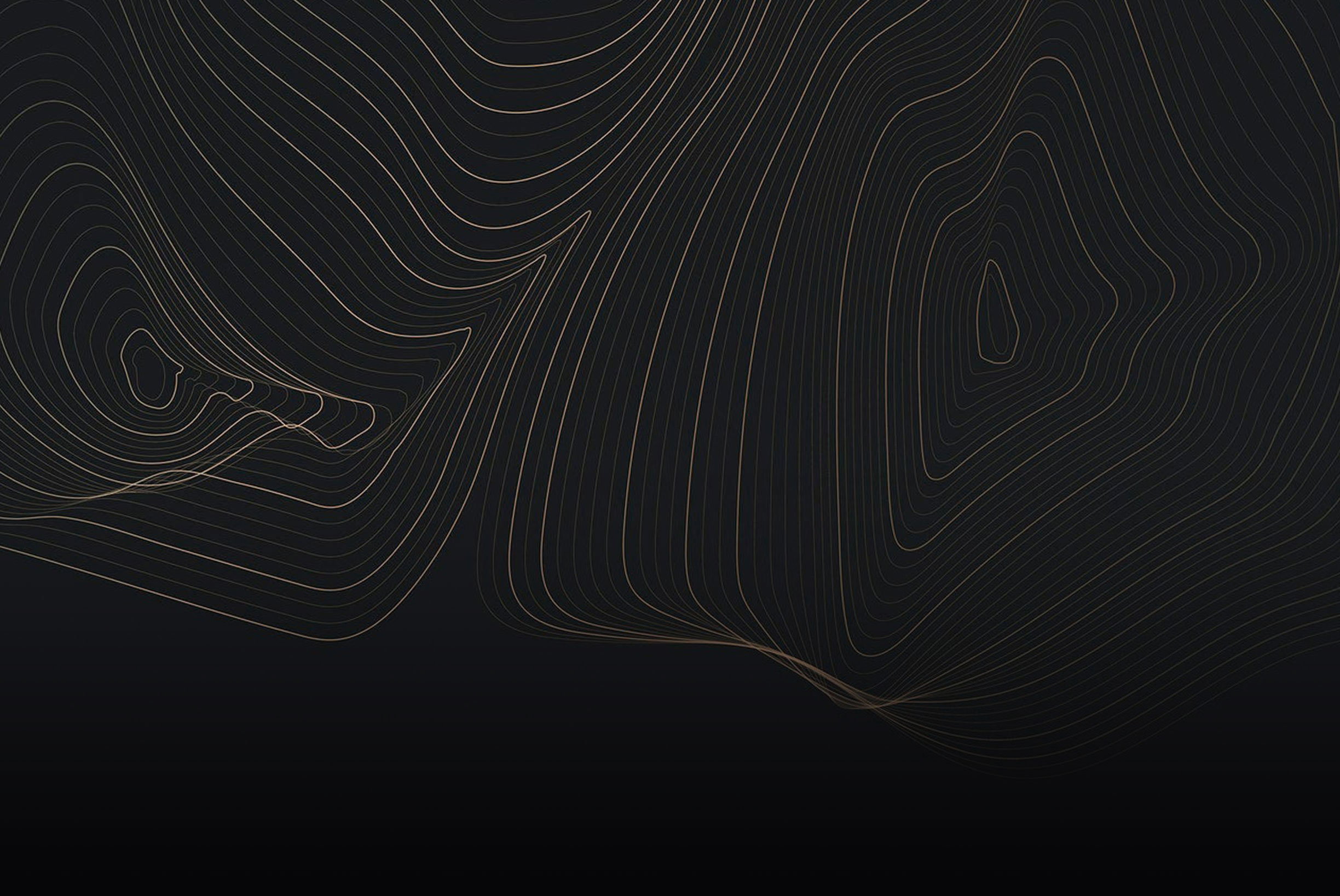
We are at a Greek restaurant called Okto. You’ve never been to a Greek restaurant like this in your life, nor to any restaurant like this at all. It sits high up on an arid, volcanic plateau called Harrat Uwayrid. The dry, gravelly earth is black, the stone is black, the tables are black and the waiters are all dressed in black, too ‒ although their faces are pink. There is no shade up here and the wind and the sun are very strong indeed.
Below our table, two men gently lead an elderly lady up the concrete steps. The breeze buffets her black robe as ‘Get Lucky’ blasts out of the tall, black speakers. Below, more figures in black move to and fro along the paths. They are gazing ‒ and selfie-taking ‒ over a scene of barely believable majesty. Another plateau, limestone this time, ruddy and gold in the shimmering, dusty afternoon light, runs for miles to our east. In the canyon below lie acre after acre of date palms, citrus and blossoming Moringa Peregrina trees, interspersed with blinding white walls of houses and mosques.
Okto restaurant is located on the Harrat Viewpoint, with breathtaking views across AlUla’s landscape
If we had a magic carpet and could leap off this cliff edge, then fly along the canyon, there are other things we would see, too. Wonders such as 2,000-year-old sandstone temples carved out of the rock, standing like abandoned ships in the desert. We’d see more ancient ruins ‒ wells, temples and crumbling walls, with square rock tombs carved into the cliff face hundreds of feet above.
Then we would fly into another valley and see even more extraordinary sites: a waterfall of gold, a metallic flowercum-star that reflects all the colours of the desert, a maze of magical frames and trampolines. And we would see a building that appears to be something else entirely: a huge cube of mirrored glass set within the ancient rocks.
We would then float down to street level and observe a scene that is, in its own way, just as remarkable ‒ a social revolution. Men and women, segregated and kept apart for years, are now mingling and talking to each other. Women are allowed to show their hair and express their individuality. Artists are free to represent all of this in photographs, murals and sculpture.
We are in a place called AlUla. Let’s list some adjectives that first come to mind that sum up the feeling of being here. They are: heady, thrilled, privileged and surprised. There are a few reasons for feeling surprised: principally, we are in Saudi Arabia.
We sent a group of writers, artists and influencers to experience AlUla for themselves
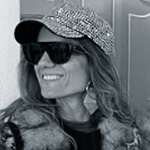
Catalina was born in Santiago and is now based in London. She’s a visual artist who works with the geopolitical concept of displacement, weaving vintage documents such as musical scores and geopolitical maps to construct beautiful, garment-like structures. During her time in AlUla she ran a workshop for community artisans at the Madrasat AdDeera, a former girls’ school turned art and design centre.

Mark started writing about travel for The Evening Standard in the 1990s and has been a regular contributor to the travel pages of The Independent since 2011. He is a past Travelex Magazine Writer of the Year and in 2013 won the AITO Travel Writer of the Year award for a piece on the Galapagos. He divides his time between Scotland and the Andalucian mountains.
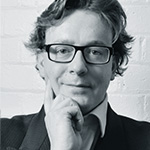
Ben has spent most of his 20-year art market career at Christie’s, and is now the Chief Executive Office of Gurr Johns, the independent art advisory and appraisals group. He offers professional insight into the global art market, independent counsel for both public and private museums, foundations and private collectors.

Dave Burt is one of the world’s leading social media influencers @MrLondon He leads @LONDON a social media agency and platform, widely regarded as “the most successful city on instagram”. He has generated over 3 Billion views from his 3M+ followers across narratives of food, travel, fashion and music.

Italian by birth, Alice moved to London in 2014. A foreign language graduate who speaks French and Spanish as well as Italian and English, she specialises in producing travel, beauty and lifestyle content, as well as managing influencer partnerships for @LONDON. Follow her @alice.sampo
The Kingdom of Saudi Arabia has not been open long. ‘Open’ means a number of things. From the early 1980s the country adopted a policy of religious conservatism that restricted both how people behaved within the country and how many visitors could arrive from outside.
In the autumn of 2019, its leaders unveiled a new e-visa system that made the country as easy to visit as, well, almost anywhere. And once you are there, be prepared to have your preconceptions challenged. This new openness — the social changes, the upsurge in cultural activity ‒ is happening at a speed that, if not unprecedented, is pretty rare in the modern world.
Yet Saudi Arabia is a place where the image lags far, far behind the reality of daily life. In the meantime, we can visit places like AlUla. Take this next sentence with a pinch of desert salt, if you like. I’ve been writing about travel for 25 years and this place is right up there with the great wonders. Instagrammable? It’d break Instagram if the influencers ever get here in seriously large numbers.
Let’s explain what we saw on our magic carpet ride. AlUla is a fertile desert valley in the north-west of Saudi Arabia, about 500 miles north of Jeddah. The first civilisation to settle here were the Dadanites (sometimes called the Lihyanites). They farmed, traded and worshipped here for a long time: seven centuries. It was their crumbling walls and rock tombs we saw earlier.
Photos by Dave Burt
I spent an enjoyable couple of hours picking around the Dadan ruins with Jonathan Wilson, collections manager at the Royal Commission for AlUla. Wilson learnt his trade back in the UK in places such as the Black Country Museum near Birmingham and the Plymouth City Art Gallery. As a helicopter lands and a group of VIPs in white robes and keffiyehs cluster on the other side of the ruins, we agree this is a bit different from Dudley and Devon.
Wilson breezes through the centuries. The Nabateans from the northern rock city of Petra were jealous of the Dadanites’ thriving trade in spices and frankincense (at the time of Christ’s birth): so they took them over. Off went the Nabateans into the desert and did what Nabateans did best: carve monumental structures in the soft sandstone, in this case for their departed kings and, notably, queens.
There are 111 tombs here in ancient Hegra, which has only been open to the outside world since late 2020, I feel I’m in the first bunch of tourists to encounter Angkor Wat or Machu Picchu. It is that spectacular. Then the Romans, too, got annoyed by the prosperity of this kingdom on their southern fringe. And after them, an era of decline and falling down.
As the Saudis built their new state in 1932, they ordained that history began in 570, with the birth of the prophet Mohammed. Dadan and Hegra were spared, but ignored. That has all now changed; Saudi schoolchildren are being taught pre-Islamic history.

What you see today in AlUla is an epic project that will unite past, present and future through a concept and masterplan dubbed the Journey Through Time. That journey began with £1.5 billion of public money to build the airport, roads and other infrastructure. Another £10bn will follow: this is one of the more significant arts, culture and tourism projects in the world right now. The Saudi project that has gathered the most media attention is Neom, the futuristic new city on the Red Sea. That region, too, has a rich, ancient ‒ and Nabatean ‒ heritage, although reporters prefer to focus on flying cars, robot maids and glow-in-the-dark sand.
While AlUla may not have the more sci-fi facets associated with Neom, it will become the cultural face of Saudi Arabia and a breakthrough destination among the world’s bucket-list compilers. These changes, big and small, are part of the wider Vision 2030 plan designed to diversify a Saudi economy in which oil revenues account for about 40 per cent of the country’s GDP.
Arts, culture and tourism are big forces for diversity, both social and economic, and that is what brings us here. Three years ago the DesertX contemporary art festival, based in California’s Coachella Valley, decided to launch an offshoot event here in AlUla. Not everyone in the art world approved.
But as the second DesertX AlUla was launched in January this year, more and more international artists were keen to showcase their work in these ancient canyons. The curators, Reem Fadda, Raneem Farsi and Neville Wakefield, were anxious that the school of 2022 work with the landscape, not just within it.
The artists of Desert X AlUla on how the landscape has inspired them

You see that in American artist Jim Denevan’s creation, a ritualistic circle of conical sand sculptures. We were encouraged to walk within, even on, the sculpture. This is a work destined to return to the soil whence it came. That cascade of gold is itself a comment on what is sustainable and what is not. Serge Attukwei Clottey’s waterfall is made up of yellow kufuor jerrycans, ubiquitous in his home country of Ghana. Monika Sosnowska’s work turns old railway tracks into a twisted, contorted tree. Not just any railway tracks: these were rails from the abandoned Hejaz railway that once cut through the desert.
The work that captivated everyone in our little group was I Have Seen a Thousand Stars and One Fell on AlUla, by Shadia Alem. This mirrored and lacquered stainless steel sculpture seems suspended above the canyon floor. As you approach, its surfaces morph in the changing late-afternoon light, through electric blues and acid greens to flawless silver.
Another Alem work, The Black Arch, became something of a cause célèbre after its appearance ‒ the first by a Saudi artist ‒ at the 2011 Venice Biennale. When an American buyer acquired it, Saudi collector Basma Al Sulaiman intervened to stop it leaving the country.
Shadia Alem’s The Black Arch is arguably the most important contemporary Saudi Arabian work
The Black Arch was recently updated for an exhibition at AlUla’s Maraya concert and exhibition hall called What Lies Within. Of all the sites ancient and modern in AlUla, Maraya, by Florian Boje of Milan’s Giò Forma Group, is the most mesmerising. It is officially the largest mirrored building in the world. But the statistics (it is covered in 9,740 mirrored panels) don’t tell the full story.
At dawn, midday, dusk and night, Maraya reflects the changing colours and light of the desert. Sometimes the structure is dark, silvery and subdued, other times it reflects the landscape back at itself with the clarity of an Imax screen.
If, during those conservative years, Saudi contemporary artists were kept within, now they are most definitely out. While the houses in AlUla’s Old Town are less striking than Maraya, they are no less important to AlUla’s grand plan. Some are fine, square sandstone structures, others the kind of homes you might see in any out-of-the-way town in the Middle East.
Yet there is a radical transformation happening here, too, as abandoned buildings are turned into art galleries ‒ from permanent to pop-up ‒ while restaurants and boutiques line the pedestrianised streets. In an old girls’ school, students of all ages ‒ overwhelmingly women ‒ practise traditional and modern crafts, weaving, making ceramics and jewellery for sale in the old town.
The project, called the Madrasat AdDeera, is a partnership with The Prince’s Foundation, the Prince of Wales’s charity devoted to preserving and marketing traditional crafts.

Back on the main street, in the airy upstairs rooms of a handsome townhouse, three young artists ‒ one from Peru, another from Germany and a third from the United States, are beginning a residency programme. Most days they venture into the desert to collect materials, natural and manufactured, to seek inspiration in the ancient cities, to absorb the light. They have found a fine place to live for their three-month stint.
Outside the atmosphere is relaxed, even a bit festive, as locals and visitors stroll, shop and linger over coffee and supper. Those visitors fly in from Jeddah, Riyadh and other main domestic cities but not, as yet, much from beyond Saudi’s borders. Will that change? Will the world flock to AlUla? That may depend on how intrepid ‒ and open-minded ‒ the world will be feeling.
For more information on visiting AlUla or to book a trip, visit experiencealula.com
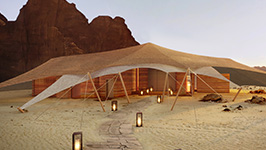
Located in the Ashar Valley, Banyan Tree AlUla is a luxury tented resort surrounded by mountain views. One, two and three-bedroom villas come with private bathrooms, plunge pools and seriously chill vibes.
banyantree.com

Sustainability is high on the agenda here, although most guests will be more excited by this hotel's stunning pool than its excellent eco credentials. The restaurant Tama is a great introduction to regional dishes, all made with farm-fresh produce, while yoga in the shadow of the canyons is simply epic.
habitasalula.com
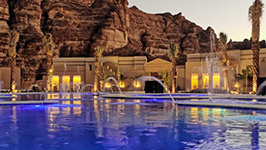
Another option with pool, this hotel is in the north of the city, a five-minute drive from Elephant Rock - one of the must-see nightspots. It's a great spot for larger groups, with regular pool parties, four restaurants and a six-bedroom Royal Suite.
shaden-resort.hotels-saudi-arabia.com